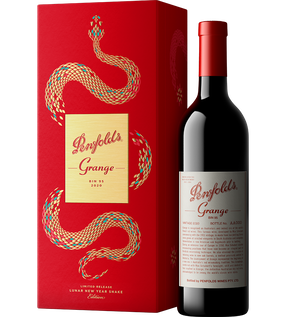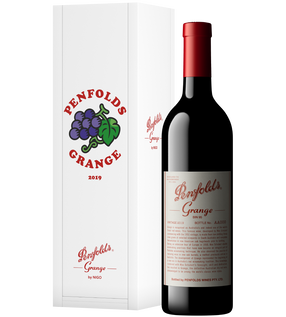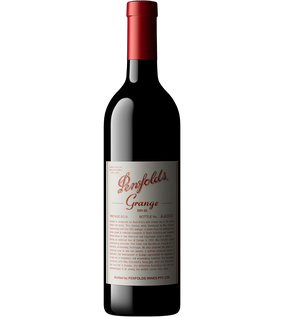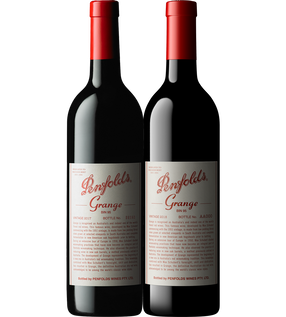About Penfolds Grange
Crafted utilising fully ripe, intensely flavoured and structured shiraz grapes, Penfolds Grange is a unique Australian style shiraz that is now recognised as one of the most consistent of the world’s great red wines.
The story began with a side trip to Bordeaux in 1950, where a wine ‘capable of staying alive for a minimum of twenty years’, first entered Max Schubert’s mind. He crafted his first experimental Grange Hermitage in 1951 – named after ‘Grange Cottage’, the first Australian home of our founders, Dr Christopher and Mary Penfold. This wine began a new way of thinking that would eventually lead to a signature wine style, but not before Grange was discredited by the Penfolds board, forcing Max Schubert to continue making the wine in secrecy. It wasn’t until 1960 that the board recognised the value of quality aged red wines with Grange triumphantly reinstated.
The timeless appeal of Grange resides in its unwavering commitment to an unchanged style, from experimental vintages to the present. Grange is memorable for its aromatic complexity, intensely rich fruit, ripe tannins of shiraz and nuanced American oak. Partial barrel fermentation and 18 to 20 months of oak maturation enhance these qualities, while further ageing in the bottle allows the wine to evolve, with tannins softening and complexity building. With an unbroken line of vintages since 1951, this iconic red wine demonstrates the synergy between shiraz and the soils and climates of South Australia.
Penfolds Grange has been awarded over 30 perfect scores from top wine critics around the world, including 100 points from both Wine Spectator and Robert Parker's Wine Advocate for the 2008 vintage and eight perfect scores for the 2018 vintage.
Frequently Asked Questions about Penfolds Grange
How long should you decant Penfolds Grange?
Before opening, allow Penfolds Grange to stand upright for several hours, enabling any sediment to settle. Pour a small portion into a glass to assess its initial state, guiding your decanting decision. As with all our wines, the recommended time in your decanter varies based on style, varietal, and age. Typically, our red wines benefit from at least 30 minutes in the decanter, with two hours as an ideal average.
For best results, double decanting is advised. Carefully pour the wine into a clean jug, avoiding sediment disturbance. Rinse the original bottle with water to remove residual sediment, then refill it using a clean funnel. This double aeration facilitates the wine's opening, but for very old wines, trickle the wine slowly to minimise aeration. The goal is to enhance the wine's characteristics.
Where is Penfolds Grange made?
Penfolds Grange is meticulously crafted in stainless steel tanks with header boards at our Barossa Valley winery, and in 3 to 7 tonne open fermenters with wax-lined/wooden header boards at Magill Estate. All components complete fermentation in new American oak hogsheads (300 litres). Post classification, the final blend spends 18 to 20 months in barrel before bottling and further maturation before release. Grange, an Australian shiraz, embodies a unique significance and complexity, making it a highly sought-after bottle in the world of fine wines.
What is the best Penfolds Grange vintage?
Grange exemplifies our unwavering commitment to sourcing the finest fruit through a multi-regional, multi-vineyard approach. This iconic red wine, irrespective of vintage, possesses the potential to gracefully cellar for up to 50 years when stored correctly. While the 2018 vintage achieved an outstanding eight perfect 100-point scores, underscoring its remarkable quality, the consistent excellence of Grange has solidified its stature among red wine drinkers. Notable vintages such as 1953, 1966, and 2018 testify to the enduring quality and aging potential of this legendary label. Each vintage, from the historic 1950s to today, represents a chapter of Grange’s storied history, resonating with enthusiasts worldwide.
How should Penfolds Grange wine be stored?
Our flagship Penfolds Grange will reward careful cellaring, allowing for the gradual evolution and development of intricate characteristics over time. The aging period will vary depending on the vintage, and we recommend you download the tasting note for your bottle.
Consider a wine storage cabinet or professional storage if your home lacks suitable conditions for optimal storage. Maintaining a steady temperature (around 14-16°C) and humidity (65-75%) is crucial. Always store bottles horizontally to preserve cork moisture and prevent oxidation.
The taste evolution of a wine is subjective and influenced by personal preferences, style, and vintage. Smaller bottles mature faster than, say, magnums. Carefully store your bottles of Grange so that you may enjoy them in many years to come.
Why is Grange no longer called Grange Hermitage?
The shift from Grange Hermitage to Grange in 1990 aligned with geographical indication regulations, particularly European guidelines. 'Hermitage,' tied to a French wine region, was removed to adhere to these regulations. Despite the name change, Grange's rich heritage and unparalleled quality endure. As an iconic shiraz, it remains a testament to our commitment to crafting exceptional wines.









